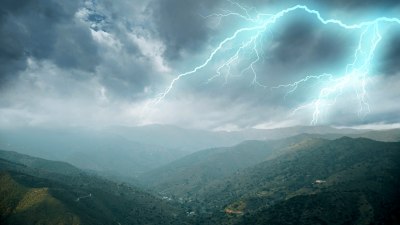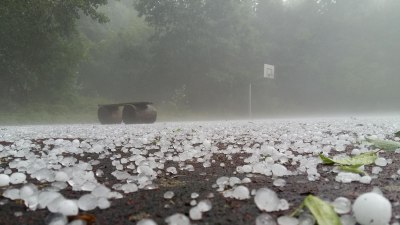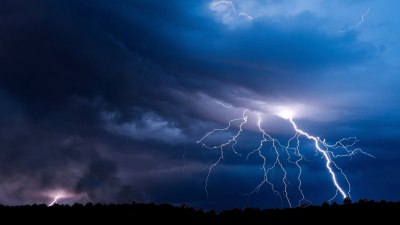When the Wind Changes and So Do We
Explore the profound ways life's changes mirror the shifting wind and how we adapt and grow through these transformations.

Image created with Flux Schnell
Change is an inevitable part of life, often as unpredictable and dynamic as the wind itself. When the wind changes, it carries with it a new direction and an altered flow, forcing everything in its path to adjust accordingly. Much like the wind, our lives are continuously transformed by shifting circumstances that compel us to evolve, reconsider our paths, and sometimes remodel our very nature.
Understanding the wind’s metaphorical power invites us to embrace uncertainty and the growth that follows change. The wind is never static; it flows freely, bends trees, influences climates, and propels progress. In the same way, our personal and collective experiences of change enable growth, resilience, and self-discovery. Through this lens, we can begin to appreciate not just the discomfort of change, but the opportunities it offers to redefine ourselves.
The Nature of Change and the Wind's Lessons
The wind can be gentle and refreshing, or fierce and destructive. Its unpredictable nature teaches us many lessons about life. First, the wind reminds us that no condition lasts forever. Calm days are followed by breezy ones, storms eventually pass, and the air settles once more. This cyclical pattern reflects the ebb and flow of our emotions and life events.
When facing hardships or phases of stagnation, the winds of change bring movement and new energy. Like a tree that bends without breaking during a storm, adaptability preserves us. Resistance to change can cause unnecessary damage, but embracing the change often promotes growth. The wind models humility and patience—qualities essential for personal evolution.
Personal Transformations Triggered by Change
Each change in our life invites a new perspective or a departure from familiar routines. Consider the moments when a significant event or realization altered your path—a job loss, a move to a new city, or the beginning of a relationship. These are the shifting winds that compel us to adjust sails and course.
Personal transformation involves acknowledging that who we were may no longer suit the current conditions. This acceptance is a vital step. Like a kite caught in a sudden gust, we might initially feel thrown off balance, but through time and adjustment, we find new stability and even soar higher.
Psychologists describe this process as resilience building—a psychological immune system that strengthens with each challenge faced. Each time the wind changes, our capacity to handle future shifts improves. We learn not only to survive but to thrive amidst uncertainty.
The Influence of Environmental Change on Our Lives
Beyond personal growth, environmental changes dramatically shape communities and cultures. Shifts in climate, urban development, and societal norms affect how we live, communicate, and understand ourselves.
Take climate change as an example. As the wind patterns across the globe alter due to warming temperatures, countless species and entire ecosystems must adjust. Humans too find their ways of life changed—agriculture adapts, migratory patterns shift, and urban planning evolves. These environmental changes are not distant; they are intertwined with our health, economies, and social structures.
The metaphor of the changing wind, then, applies not only internally but externally in how we live collectively. It encourages proactive adaptation and innovation, illustrating the necessity of flexibility to meet new challenges holistically.
Social and Cultural Winds of Change
Cultures and societies, much like individuals, experience their own shifts inspired by new ideas, technologies, and global interconnections. Social winds can democratize knowledge rapidly, challenge traditional beliefs, and promote inclusivity.
Movements for civil rights, environmental sustainability, and digital transformation exemplify these influential gusts. When society embraces or resists these changes, we witness the tension and ultimately the transformation similar to nature’s reactions to altered wind currents. Communities that anticipate and harness these winds move forward, enriching collective human experience.
However, change also raises questions about identity and values. Just as a gust can rearrange leaves on a tree, social change can disrupt familiar norms. Negotiating this change is critical to maintaining cohesion while evolving.
Strategies for Navigating Change Effectively
Given the inevitability of change, cultivating skills to navigate it benefits all aspects of life. The following strategies, inspired by the nature of wind and adaptation, can assist individuals and communities:
1. Acceptance: Recognizing change as a natural phenomenon avoids futile resistance and reduces anxiety.
2. Flexibility: Adjusting plans and perspectives like a sailboat steering with the wind ensures progress despite shifts.
3. Patience: Some changes unfold slowly; patience allows time for new equilibrium to establish.
4. Mindfulness: Staying present enhances awareness of subtle changes and responses.
5. Learning: Treat change as a teacher offering insights and opportunities for growth.
6. Community Support: Engaging with others provides strength and diverse perspectives during transitions.
Case Studies: Lives and Societies in the Face of Wind-Like Change
History provides countless examples of individuals and societies transformed by change, reflecting the metaphor of wind altering landscapes.
Consider Nelson Mandela, whose years of imprisonment represented a profound personal and political transformation. His emergence symbolized a new direction for South Africa and exemplified resilience and the power of change to reframe identities.
On a societal scale, the industrial revolution altered social structures, economies, and daily life like a powerful gale. While challenging, it led to innovations that shaped the modern world, illustrating how embracing disruptive winds can propel progress.
More recently, the digital revolution has shifted global interactions, economies, and cultures at an unprecedented pace. Digital technology’s winds demand continual adaptation from individuals, companies, and governments, affirming the enduring relevance of flexibility and learning.
Internalizing the Wind’s Wisdom for Continuous Growth
Bringing the lessons of the wind into daily life encourages a mindset attuned to change and possibility. By internalizing the idea that change is natural and necessary, individuals reduce fear and increase openness to new experiences.
Reflection practices such as journaling, meditation, or dialogue help process change with clarity and calm. They support identifying areas where resistance persists and provide space for intentional adaptation.
Navigating personal or professional transitions benefits from this self-awareness and acceptance. Whether changing careers, relationships, or lifestyles, seeing oneself as a participant in a natural cycle fosters empowerment rather than victimhood.
Building Resilience Through Connection and Adaptability
Just as the wind affects all elements it touches, building resilience involves connection on multiple levels. Psychological resilience grows through strong relationships, emotional intelligence, and a sense of purpose.
Communities foster resilience by sharing resources, knowledge, and support systems. This collective strength buffers the impact of change and fosters innovation responsive to shifting conditions.
As the climate changes, neighborhoods adopting sustainable practices and collaborative planning are examples of resilience in action. These communities understand that adapting to the wind’s changes requires unity and creativity.
Embracing Change With Curiosity and Courage
Ultimately, the changing winds of life invite us to cultivate curiosity and courage. Curiosity opens us to learning and new opportunities, while courage helps us face uncertainty without retreat.
Imagine embracing change not as a threat but as a vital force that refreshes and propels personal evolution. This mindset transforms challenges into adventures and setbacks into stepping stones.
Curiosity asks, "What can I discover about myself? What new paths might open?" while courage answers, "I will face this wind and dance with its rhythm." Together, they form a powerful response to the ever-shifting breezes of existence.
By honoring the metaphor of the wind and its power to change everything, we align ourselves with the natural flow of life, enabling continuous growth, renewal, and fulfillment.











